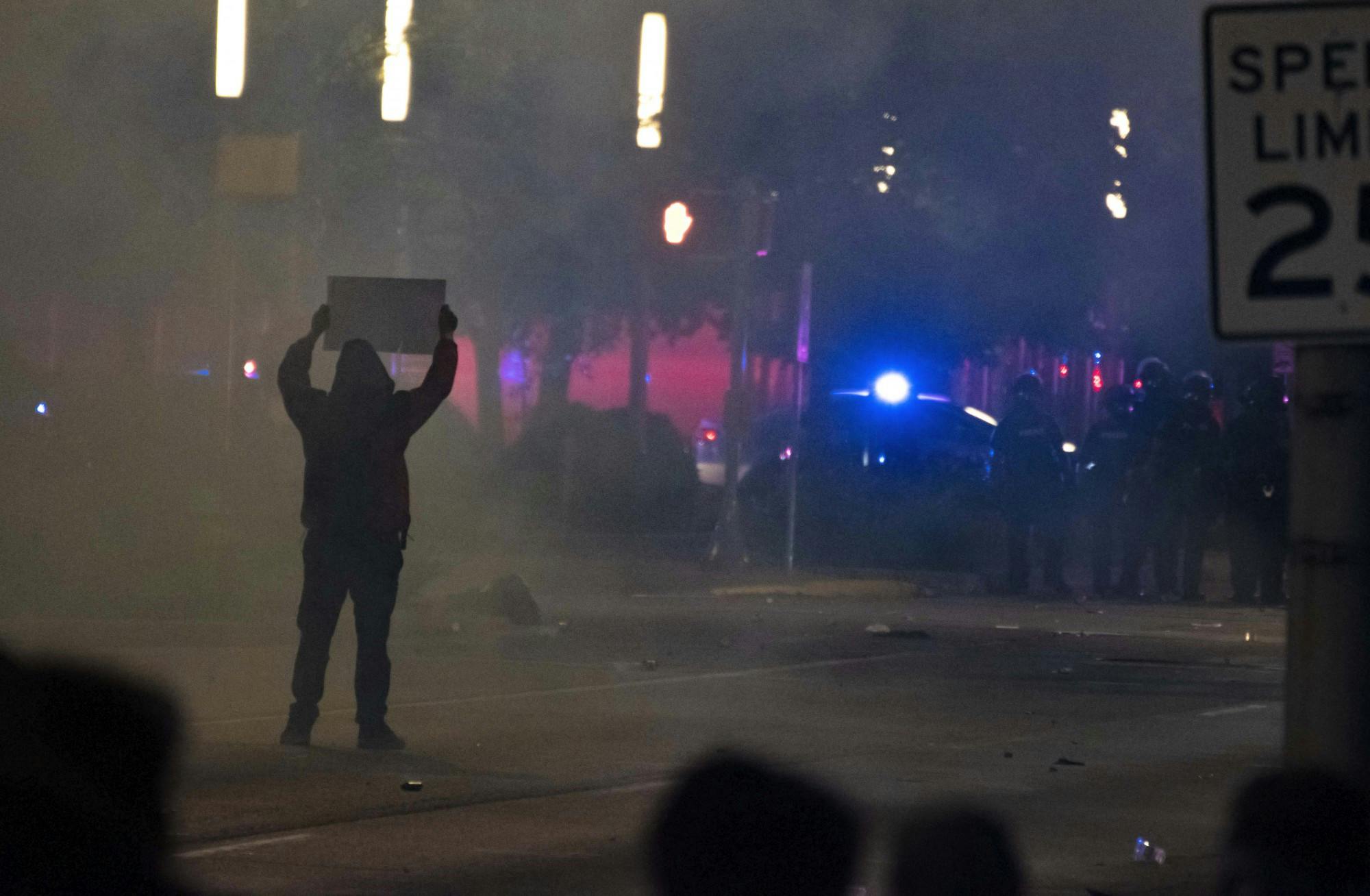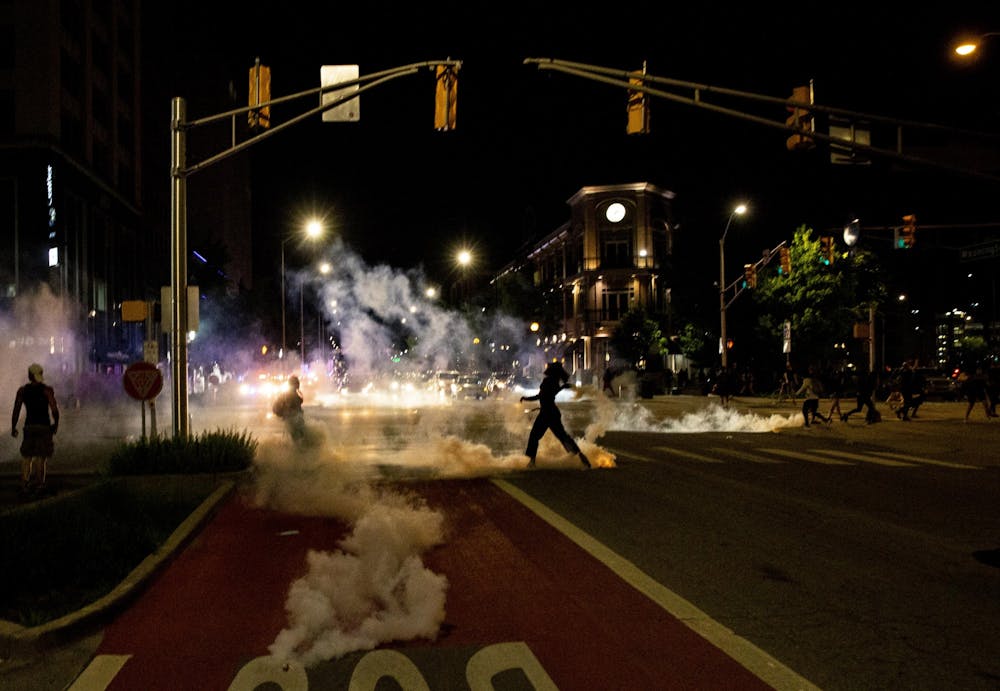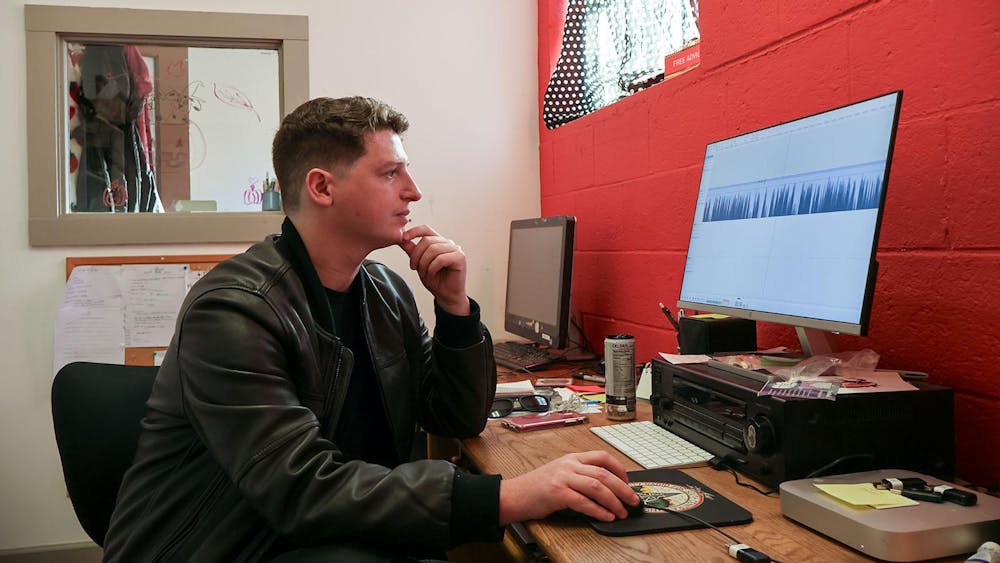Indianapolis Metropolitan Police Department agreed on Oct. 29 to end the use of riot control agents against peaceful, law-abiding protesters and passive resistors. Passive resistors are defined as those who are nonviolent but may be breaking the law. Riot control agents include chemical agents such as tear gas and pepper balls.
The agreement settled a suit filed by the American Civil Liberties Union in June on behalf of Indy10 Black Lives Matter and individual protesters who were exposed to chemical riot control agents deployed at protests in late May. The complaint claimed the deployment of tear gas violated First and Fourth Amendment rights of those protesters.
Similar scenes, and similar lawsuits, played out across the country during protests after the killing of George Floyd. IMPD was one of about 100 law enforcement agencies across the U.S. — and one of three in Indiana — that deployed tear gas and other riot control agents against protesters this summer. According to the New York Times, this summer marked the most widespread use of tear gas in the U.S. since the late 1960s and early 1970s.
The IMPD settlement states that riot control agents will not be used against future protesters unless there is an imminent threat of serious injury or death or other exigent circumstances.

The department also agreed not to use riot control agents to deter protesters from relocating or because there are unlawful activities occurring elsewhere in the city, both of which they did this summer. It also limits the circumstances in which IMPD can use impact weapons, such as rubber bullets, against protesters.
“Demonstrators in mourning deserve safe and secure places to gather without the threat of state-sanctioned violence, especially prematurely and without provocation,” Indy10 Black Lives Matter said in a statement responding to the settlement.
The ACLU of Indiana also filed a lawsuit on behalf of Balin Brake, a 21-year-old Fort Wayne, Indiana, protester who lost his right eye to a tear gas canister on May 30. That complaint, filed on Oct. 2, also argues Brake’s First and Fourth Amendment rights were violated.
A former IU student was among those tear gassed at a protest in Indianapolis this summer. She said she went to protest police brutality and mourn the loss of George Floyd. She said the crowd was peaceful when the police deployed tear gas.
“It just seemed like it came out of nowhere,” she said.
She said the feeling of not being able to breathe was the most notable affect the gas had on her.
She observed that “I can’t breathe” became a common political refrain this year.
"It's been such a strong theme lately with COVID, with police brutality — now with this, like with this tear gas," she said. "This theme of not being able to breathe. I can't breathe. It's just, I mean, we're being suffocated."
She said the gas also made her eyes burn and tear up. She wears contacts, which she had to remove because they made the effects of tear gas worse. She was separated from her friends and unable to see. She said the pain was intense for about 15 minutes.
“It’s an acceptable first step,” she said of the IMPD settlement. “But I don’t think they’re great at having a good grip on what a peaceful protest is. And I think tear gas should be illegal all the time.”

Tear gas and other riot control agents are used because they are thought to have short-lived but debilitating effects, making them effective for quelling protests. The sensation of not being able to breathe and a burning sensation in the eyes are the most common short-term effects of tear gas.
There is no legal obligation on state or federal governments to monitor or report the deployment or effects of tear gas, which is banned under the Geneva Protocol for use in warfare. The Centers for Disease Control and Prevention urges those who have been exposed to riot control agents to seek medical attention immediately.
This summer, there were concerns that tear gassing protesters might contribute to the spread of the coronavirus by causing people to cough, rub their eyes and nose and remove their masks. A U.S. Army study showed soldiers exposed to tear gas had a higher risk of contracting respiratory infections such as the flu and the common cold, heightening experts' concerns about tear gas exacerbating COVID-19. Experts say it’s difficult to determine whether spikes were related to tear gas use because it was used around the same time states began to allow businesses to reopen.
While there are no exact counts of tear-gas related casualties available, it is clear the effects of tear gas aren’t always short-lived. Tear gas has caused at least hundreds of miscarriages and menstrual irregularities, lost eyes and limbs, respiratory failure, other permanent injuries and deaths.
Editor’s note: The author of this piece wrote opinion columns for the Indiana Daily Student this summer opposing the use of tear gas by police, specifically including one about this lawsuit.






